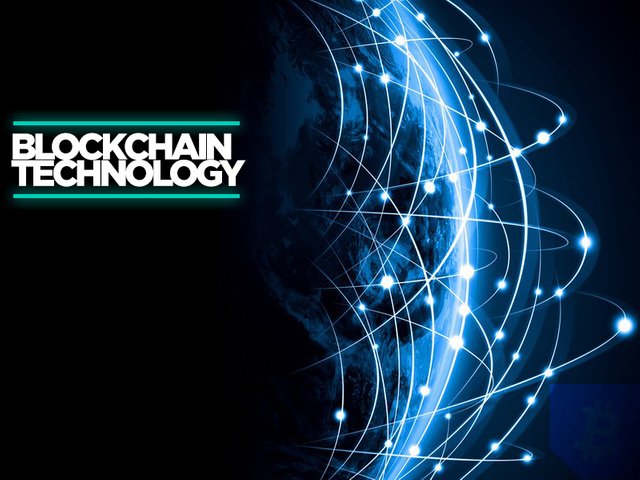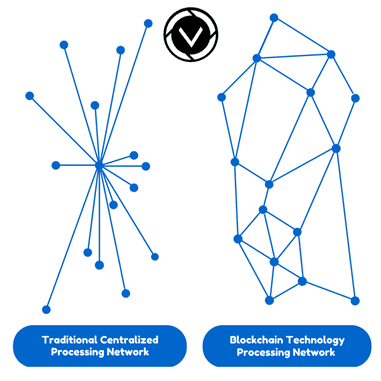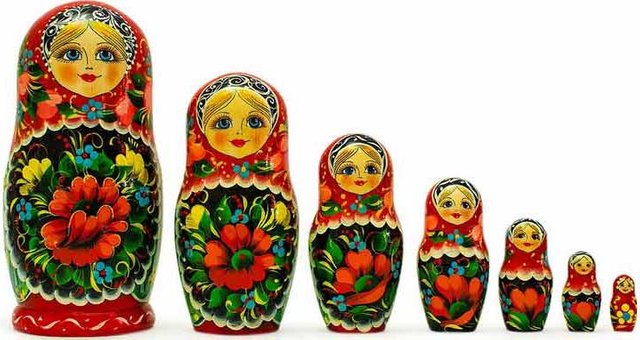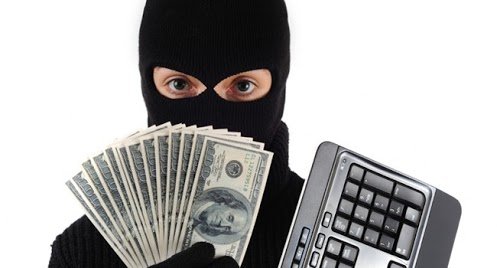Because you don’t have to be a tech genius to understand how the Blockchain works (and hence how steemit works too!), here is an easy-to-read guide to the Blockchain for non tech-savvy readers. It’s an ultra-simplified version, made for people to understand the basic mechanisms of the system.
Note: I am going to speak about the Blockchain, not the Bitcoin. I will use the Bitcoin as an illustration of what can be done using Blockchain technology, using examples. 
1- Why the Blockchain?
Traditional databases are maintained by a single organization, and that organization has complete control over the database. (ability to tamper with the stored data, to censor or valid changes to the data, and even to add data fraudulently).
There are use cases, where the data being stored is sensitive and the motive to manipulate it is too enticing to allow any single organization to have such total control over the database. The simplest way to ensure that no single entity can manipulate the database is to make the database public: you distribute it and allow anyone to store a copy of the database. Therefore, everyone can compare it with everyone else’s and make sure that no fraudulent modification happened.
This is OK if the database is static and never changes. But if changes must be made to the database after it has been distributed, a problem arises: Among the people owning a copy of the database, who decides which changes are allowed? (and in which order they occurred?)
Blockchain technology solves this problem by creating a network of computers (called nodes).
- Each node stores a copy of the database.
- A set of rules (called the consensus protocol) defines the order in which nodes may take turns making new changes to the database.
In this way, all of the computers (nodes) agree to the state of the database at any time, and no one node has the power to falsify the data.

2- What does the Blockchain do?
The Blockchain is a piece of software that stores and transfers value or data across the internet. In fact, see the Blockchain as just a file. Like a text file, a word document for instance. The main advantage of the Blockchain is how data is put together and stored.
Analogy with a book: Let’s imagine that the Blocks in a chain are like pages in a book A book is a chain of pages. Additionally to the story (the text), each page in a book contains additional information (called meta-data):
- at the bottom is usually the page number which tells you where you are in the book.
- at the top you have the title of the chapter you are reading.
In a Blockchain block (=page), you will find the same structure:
- the contents of the block (=the story). In the Bitcoin Blockchain, it is the Bitcoin transactions which are logged.
- a ‘header’ which contains the data about the block (=chapter title) The header contains a reference to the previous block and a fingerprint of the data contained in this block: a coded system to make sure that the data is not corrupted.
In a book, you use this meta-data (=pages + chapters) to see if a page has been removed or misplaced. Similarly, in the Blockchain, making each block related to the previous one, this meta-data helps ensuring a high level of security to track transactions
That is why a primary use of it was the creation of what we call crypto-currencies and the management of payments with them: buying bitcoins and/or buying stuff with bitcoins.

3- How do these fingerprints work?
Fingerprints are like certificated in the Blockchain: they exist to make sure that it cannot be corrupted. They are also called “hash”.
You can play with basic fingerprinting here: http://www.xorbin.com/tools/sha256-hash-calculator
Type a few words, look at the hash, and modify just ONE letter, and see how the hash totally changes. Using a hash, or fingerprint is a simple and easy way to make sure that the data you have is the correct one.
Example: Imagine a legal contract. Once validated you create a fingerprint code by putting the text in the fingerprinting algorithm. It will generate a unique hash code.
Now, if someone reads it and sends you back the file by email saying they agree on the terms of the document attached. Now, you need to make sure that NOTHING has been modified and that they actually agreed on the original document. One single word change in the legal contract could void it, or transfer liability to you.
Instead of having to re-read line by line the signed contract, just put it in the fingerprinting machine, and compare the 2 hash-files. Any modification will totally modify the hash, and therefore let you know that the document you received has been modified.
Note: this hash code CANNOT be used to retrieve the data. You can therefore share it publicly without fearing that anyone can reproduce the legal contract. This is just the certificate of authenticity of your file.
So, each block’s hash (=fingerprint) is produced using the hash of the block before it. So, if you tried to fake a transaction by changing a block that had already been stored in the Blockchain, that block’s fingerprint would change, and all the fingerprints of related other blocks: ALL THE SYSTEM IS LINKED
If someone checked the block’s authenticity (looking at the hash), they’d find that the hash was different from the one already stored along with that block in the Blockchain. The block would be instantly spotted as a fake.
Once these fingerprints (hash) are created and consistent with the data, and the fingerprints join up in a chain, then you can be sure that the Blockchain is secured. It's a bit like Russian dolls, adapted to security.

4- How are created the blocks of transactions and the associated fingerprints?
We call it Mining.
Mining is the process of writing pages (blocks) of transactions and validations (fingerprints) into the ledger (the Blockchain).
Mining:
- Requires a computer with software, thus requires time and electricity (cost) to find the correct codes
- Is needed to ensure the consistency of the blockchain.
- Is decentralized: any computer on the chain (nodes) car add or valid transaction on the Blockchain.
- Can requires a lot computational power. (see the bitcoin remark below).
Bitcoin Mining Definition The process of adding and verifying new transaction records to the bitcoin Blockchain (distributed public ledger), which includes all past transactions. During this process, new bitcoins are released from the remaining unmined pool of 21 million total bitcoins. The bitcoin network deals with this by collecting all of the transactions made during a set period into a list, called a block.
Example of a step by step process:
a- A transaction occurs: When you make a bitcoin payment, the transaction message is sent to the network and passed around all the network participants (called ’nodes’), and remains in an ‘unconfirmed’ state. This means the nodes have seen that the payment has been initiated and validated, but it isn’t yet written into the bitcoin Blockchain ledger.
b- It is mined in a block: Miners take the list of unconfirmed transactions, and they bundle them into a block, which is just a list of transactions plus some fingerprint data. Trying to find a fingerprint which follows some rules or criteria decided by the Blockchain. These rules are important, because they can make mining very difficult (needing lots of time or computational power).
c- Then the block is published in the Blockchain: Once a miner found the solution, then the block is published to the rest of the network. The other computers on the network validate that the block meets the criteria (reading that the fingerprint follows the rules).
In the case of Bitcoin, mining is also the mechanism used to introduce Bitcoins into the system: Miners are paid any transaction fees as well as a "subsidy" of newly created coins. See it like a minting process: miners create bitcoins. So, if anybody can become a miner, how do you limit the creation of bitcoin?
Simply by:
- Making it hard to mine a block, using complex rules or criteria.
- Manage the payment of the mining process. Giving less and less rewards for mining over time. (see: Halving event)
With these rules, the amount of newly generated Bitcoin is controlled, as well as the rewards rules for the miners. Without these rules, everybody would create vast amounts of bitcoin, hence lowering the value of this currency.
5- Why and how is the Blockchain different to files on a computer?
Because the Blockchain is a shared resource.
Imagine a network based file storage system (Dropbox for instance) where your files are at the same time on your computer and on multiple servers in the world (= the cloud). Without this network, and using solely the computer, if you lose or break your computer or if it is attacked by a hacker, you could lose all your data.
Because of the way the Blockchain is structured, with blocks depending on each other, we can store it publicly on the internet, therefore we can put it on multiple servers and make sure it cannot be hacked. As the Blockchain resides in the cloud, you just need your username and password to access your data (or money) from anywhere anytime.
6- So, what can I store or transfer using this Blockchain technology?
To use the Blockchain, you need a “wallet”. A wallet is like an account on Facebook and contains a unique string of numbers and letters used to identify you. It also contains other codes (=keys) that allow you to realize transactions on the Blockchain.
At this time, the most popular use for the Blockchain is to make payments with virtual currencies. For example, you can buy bitcoin with real money and then spend it on the internet using the Blockchain.
Authorizing a payment using the Blockchain is similar to using a credit card to buy something online. Instead of the 16-digit credit card number, you provide the vendor with a unique string of numbers and letters generated for each transaction. With this unique identifier, the Blockchain can verify and authenticate the transaction, and then store its existence.
7- Can I use the Blockchain to transfer real money?
No, but hopefully very soon. An ex-googler initiative is trying to get the banks to use the Blockchain technology (link). But we are not yet there.
Some companies are also starting to the Blockchain to make international financial transfers. It’s the case of Santander which became the 1st U.K. bank to introduce Blockchain technology for international payments. (link)
Santander U.K. has announced its introduction of Blockchain technology for international payments through a new app that is currently being rolled out as a staff pilot. The bank plans to make the application, which is only available on Apple’s iOS, available to consumers after it completes the pilot program. The announcement makes Santander the first bank in the U.K. to use Blockchain for international payments.
8- How is transferring or storing money using the Blockchain different from using a bank account?
Mostly regarding processing time and transfer-limits.
When you transfer value or currency from your bank account to an account with a different bank or other financial institution, the transfer can take days.
When you use the Blockchain, the transfer is almost immediate.
Also, most banks impose limits for all transactions. When you use virtual money on the Blockchain, there are no limits. The reasons behind this limits and time is mostly related to the security of the transaction.
Let say you are a bank and someone asks you to transfer $200 to a French bank. You agree on EUR 180 based on the current exchange rate.
You now have to make this deal, and you have multiple issues: This implies lots of transactions and you have to secure them and register them in your ledger and make sure everything is well documented before you proceed to the next steps.
Now… imagine your ledger is a Blockchain. Imagine you use your wallet (key) to realize this transaction (with someone who is registered on the Blockchain too). This transaction will be encrypted in a block, and will become broadcasted (publicly for the Bitcoin) and secured in the Blockchain because of its design (links between transactions).
Now, basically, you don’t need a bank anymore to make the transaction…
If we continue to speak about financial transactions, you can see this “book” created by the Blockchain (blocks=pages) like something similar to a bank ledger, the document where every transaction is logged. As we saw, each transaction not only logs the details of the operations, but also has a fingerprint, serving as a certificate of authenticity. Each transaction, or group of transactions is linked to the previous transaction or group.
As said previously, the beauty of Blockchain is that it makes it very complicated to falsify the ledger. Because in order to falsify the document, you need to modify all the fingerprints in the blocks (remember: blocks are linked to each other with this fingerprint code system), including all the previous transactions. That is a massive amount of work. Hacking the Blockchain is difficult: which means it takes time, and money (see: big fast computers, and a lot of them).
On the other hand, Bank accounts and credit cards are vulnerable to attacks from hackers. If you get the credit card code, you can purchase things immediately.

9- CONCLUSION: Future evolutions: What else can I use the Blockchain for?
- Very soon the Blockchain will be used for online transactions: It will be enable to secure smart contracts, crowdfunding and auctions, and even online betting. It can also be used verify the provenance of artworks and diamonds (certificates of authenticity and tracking of the exchange),
- It can also be used in the supply_chain_industry.
- One day, it may even store information about people, products and property: Some say a government could totally rely on the Blockchain technology to administer the country. Today, we start to see some cool initiatives trying to overhaul the voting_system.
- We also see disruptive uses the music_distribution. And even artists like Pink Floyd seem to like it !
- And as we are on steemit, you can witness the power of the Blockchain, being used for a social media site and powering the crypto-currency STEEM used to reward the writers.
As you can see, we are just at the beginning of a new era!!
I hope you enjoyed the reading, and that it gve you a better understanding of the blockchain.
Cheers,
------------------------------------------------------------------------------------------------------------------------------
If you want to dive more in details, please have a look here:
- https://bitsonblocks.net/2015/09/09/a-gentle-introduction-to-blockchain-technology/
- https://bitsonblocks.net/2015/09/21/a-gentle-introduction-to-bitcoin-mining/
- https://followmyvote.com/online-voting-technology/blockchain-technology/
- http://www.blockchaintechnologies.com/blockchain-mining
- http://www.coindesk.com/information/how-bitcoin-mining-works/
- http://www.coindesk.com/making-sense-bitcoins-halving/
Thanks for pointing me to this post. Nice job! Keep up the great work!
#thedoglady
Downvoting a post can decrease pending rewards and make it less visible. Common reasons:
Submit